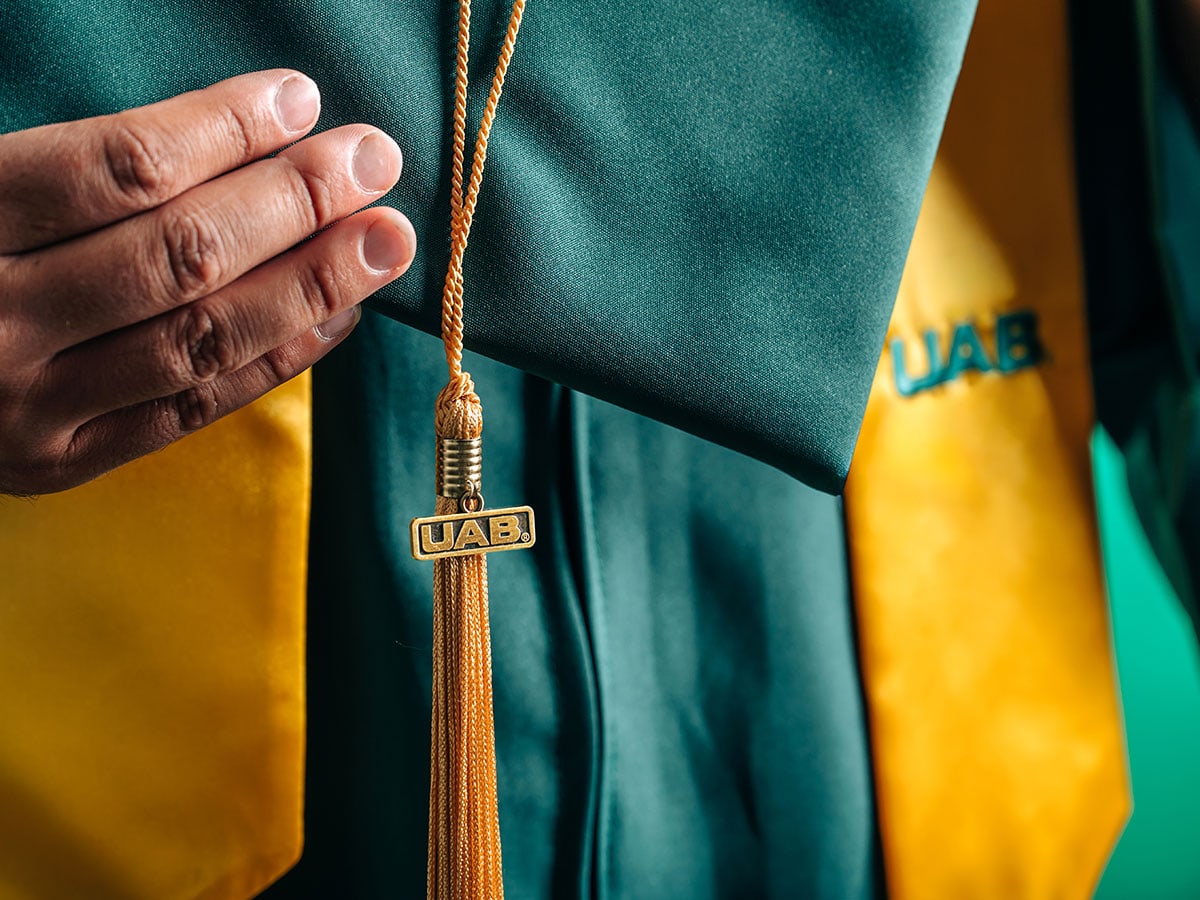For nine years, Chase Chandler tended to wounded warriors as a Navy Special Warfare Combat Crewman (SWCC) medic, serving three tours of duty overseas, from the South Pacific to the Middle East. These days, his patients are ailing science experiments — in space.
After seeing the world on SWCC teams, Chandler returned to his native Birmingham to work on the next step in his career path: getting off the planet. He is now finishing an undergraduate degree in the UAB College of Arts and Sciences Department of Physics, all the while holding down a full-time job in the Payload Operations Integration Center at NASA’s Huntsville complex, where he oversees research projects running on the International Space Station. (See the Payload Operations Integration Center in action in the NASA video below.)
“Weird things can happen”
Chandler is one of more than a dozen NASA employees in similar positions who must know the “ins and outs” about the experiments running on the space station. The ISS is basically a big lab, but it is a unique one. “Weird things can happen in space,” says Chandler. “My team looks at safety issues and any potential hazards to the astronauts or the experiment. If something goes wrong, we come up with a plan to get things back on track.”Although each controller specializes in a subset of experiments, “you have to know about each one, as well as the workings of the ISS,” Chandler says. “If something goes wrong, you need to know how to reroute power to keep an experiment functional. If it’s in the freezer, you need to know how long it can be powered off before it is lost for good. It’s a very, very busy position, and it directly stems from my training in the military.” Chandler earned his spot at NASA through the organization’s Pathways Programs, which offer students the opportunity to work as paid interns as they launch their careers in public service. Students who are veterans, especially veterans training in science, technology and math fields, receive special preference in the selection process, Chandler notes.
"My team looks at safety issues and any potential hazards to the astronauts or the experiment. If something goes wrong, we come up with a plan to get things back on track."
Huntsville, we have a problem
Before their projects go into orbit, Chandler meets with researchers to “get hands-on with the experiments so I know what is supposed to happen, what the astronauts will be touching,” he says. “And we have a direct line to those individuals in case something goes wrong.”Many times, these situations are related to the space station’s aging circuitry, Chandler explains. “I worked on-console for three days and two nights last week, and we had one issue,” Chandler recalled recently. “A crucial electrical component that powers several things tripped and they all lost power.” He worked with controllers in Houston to successfully switch the experiments to backup power sources.
 Chandler's wife, Tjana (right), is a UAB graduate and engineer for the university's Engineering and Innovative Technology Development (EITD) team. Above, Chase and Tjana are pictured in an EITD control room that monitors performance of UAB-built freezers on board the International Space Station.
Chandler's wife, Tjana (right), is a UAB graduate and engineer for the university's Engineering and Innovative Technology Development (EITD) team. Above, Chase and Tjana are pictured in an EITD control room that monitors performance of UAB-built freezers on board the International Space Station.Dreaming in zero gravity
Chandler is on track to graduate in spring 2017 with a bachelor’s degree in physics and a minor in materials science from the UAB School of Engineering. He plans to continue on to get his doctorate in physics while he works at NASA. His ultimate goal is to become an astronaut himself, and with his unique combination of skills, “there is a good chance I’ll be successful,” Chandler says. “Space has always been my passion. Even when I was in the service, that was a long-term dream.” (Chandler wouldn't be the first Blazer in orbit; UAB's Larry DeLucas, O.D., Ph.D., conducted a series of crystal growth experiments as an astronaut on the space shuttle Columbia in 1992.)Chandler’s wife, Tjana, is a UAB alumna who works as an engineer on the university's Engineering and Innovative Technology Development team, which recently earned several NASA awards for its custom-built freezers, which are used extensively on the ISS.
Chandler says UAB faculty have played an important role in his career development. “Dr. Foley and Dr. Genau in the School of Engineering, and Dr. Camata in the Department of Physics are big influences on me, and Dr. Kawai in the Department of Physics is one of my biggest role models,” he says. “Dr. Kawai's number-one priority is making sure his students are interested in science and physics. These can be difficult subjects to grasp, but he wants you to know them, and wants you to want to know them as well.
“Right now we’re drowning in knowledge but we lack wisdom,” Chandler says. “Teachers like Drs. Kawai, Camata, Foley and Genau are making a difference.”


